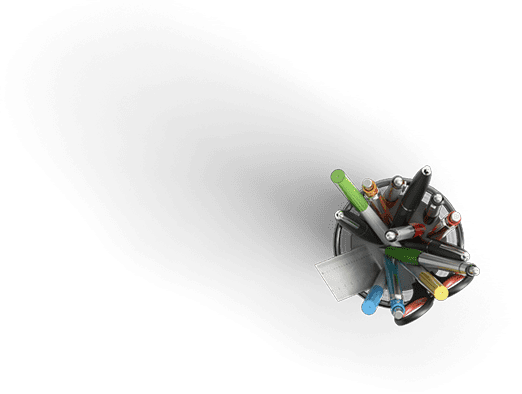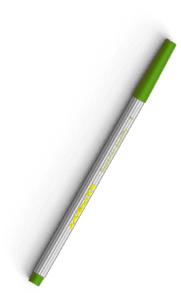Unequal Opportunity in Education Writing Project Worksheet
Description
Unformatted Attachment Preview
Writing Project 3 Revision
Instructions: Please revise your Writing Project 3 Timed Writing using the following worksheet.
1. Revisit your Conclusion: To begin, review the conclusion criteria below.
The conclusion is a separate section of the essay, a kind of counterpart to the introduction. It has
the same purpose as the introduction to assist the reader in understanding your information and
thinking.
Reiterate:
Recall and Restate: What is important for the reader to remember? It might be a simple
restatement of the thesis alone; it may be more useful to stress one or more of the major support
ideas in the essay. Try to rephrase, at least to show you have rethought these main ideas.
Rephrasing also gives you the opportunity to rethink the key concepts and sharpen their wording.
If useful, you may want to find a quotation from one of your sources to do these reiterations for
you: s Joe Expert says . . . a good device for research papers]
To revise your conclusion, please follow the steps below.
Step 1: Copy and paste original conclusion paragraph here and apply the highlighting.
Copy and paste your conclusion from Project 3’s timed writing in a new document. Then,
In yellow, highlight the essay summary
In blue, highlight your opinion/claim/thesis
In pink, highlight the main points you used to support your claim
In green, highlight the what is important for the reader to remember (Don worry if you do
not have all of these parts yet. That is why you are revising.)
Step 2:
Start thinking about how you can make this part of your conclusion better. If you are missing any
of the parts above, add it. If you already have all parts, look at each part individually and see how
you can make it better.
Rewrite your conclusion, making sure you have all the parts listed above.
Luna 2
Write your revised conclusion paragraph here:
2. Revisit your Quote Analysis: To begin, review analysis criteria below.
An argument consists of a claim supported by evidence. Analysis is an explanation of how a
specific piece of evidence serves to support a larger, more general claim. A biology experiment,
for example, might investigate the effect of a specific protein on a human cell. The process of
logical connections, observations, and inferences that we call analysis allows us to understand
how this cellular evidence supports claims about the overall health of an entire body, or even an
entire population. Like cells, quotations are small parts of a larger body, and analysis of
quotations allows a writer to persuasively support larger claims about the body of a text or a
body of knowledge.
Analyze details and language in the quote carefully in a paragraph that is author focused.
Here are some questions and guidelines to ask yourself about the quote:
1.The most important question that should guide your analysis is: /w is the author creating
meaning in this quote?hat means that your analysis should be author focused, using the authoràlast name. Don
confuse the author with the fictional character: the author creates the characters to make a
larger point about the real world.
3. You may need to provide some context for the quote so that readers understand where it
comes in the story or who the quote is about. You can add this context in the beginning
of your analysis paragraph to help your reader get oriented.
4. Look for literary devices, such a metaphor, descriptive language, repetition, symbolism,
etc., or interesting diction (word choice) or syntax (word order). Write about why you
think the author uses those devices or words whatàthe effect or point that the author is
trying to make?
5. Discuss why the quote it is significant to the work as a whole. Do not just summarize or
regurgitate what the quote says. Instead, unpack how the author creates meaning in the
quote.
To revise your analysis process, please follow the steps below.
Step 1:
Luna 3
Copy and paste a body paragraph from Writing Project 3 Timed writing below and apply
the highlighting.
n yellow, highlight the quotes
In green, highlight the quote introductions and MLA citations
In pink, highlight the analysis
***Don worry if you do not have all of these parts yet. That is why you are revising.
Step 2: Revise your Quotes
Start thinking about how you can make the quote integration seamless. Pick two direct quotes
and their analysis and revise. If you are missing any of the parts above, add it! If you already
have all parts, look at each part individually and see how you can make it better.
Make sure you have an introductory statement, direct quote in quotation marks, citation in MLA
format, and double the length of the quote in analysis after the quote.
Revised Quote 1:
Explain: How and why does this information support the thesis and topic sentence?
Revised Quote 2:
Explain: How and why does this information support the thesis and topic sentence?
Luna 4
3. Add a Counter Argument: To begin, review criteria below.
For our purposes, we will keep the counter argument to one sentence. We will add the counter
argument to one of our body paragraphs. The counter argument should come in as the first
sentence, before the Point. Then, the Point refutes the counter argument and proves you are
right.
Things to remember:
he counter argument for our purposes will be only one sentence. We will not provide
Information or Explanation about the counter argument. We will only mention it, right before
the Point.
The counter argument should provide a reason, not just state the opposite thesis.
Your Point will work to prove the counter argument wrong. Your reason in that body
paragraph should directly respond to the reason in the counter argument.
Step 1: Copy and paste a body paragraph from Writing Project 3 Timed Writing below
and apply the highlighting.
n yellow, highlight the point
Add a one sentence counter argument before the Point. Then, add a transition word to
move from the counter argument to the Point.
In green, highlight the counter argument sentence
In pink, highlight the transition word
4. Add Research: To begin, review criteria below.
You chose one deep-background source`book or broad-focus scholarly journal article that
would help you explain, illustrate, and argue your claim. You will now incorporate that article in
your Writing Project 3 revision.
Step 1: Write the name and MLA reference for this article.
Step 2: Explain how you verified that this article was scholarly.
Luna 5
Step 3: Explain how and why this article helps you argue your claim/thesis.
Step 4: Copy and paste an original body paragraph from Writing Project 3 Timed Writing
below.
Step 5: Revise the paragraph by adding two direct quotes from the new article you chose
for your additional research and add the highlighting.
In yellow, highlight the new quotes and their citations
In pink, highlight the analysis of each of the new quotes you added.
6. Create an MLA Works Cited Page: follow the directions below.
Look back at the three articles you used to complete the Writing Project 3 Revision, and create a
Works Cited page for Writing Project 3 that includes all three articles. Please be sure you adhere
to MLA. Make sure the articles are listed in alphabetical order with a hanging indent.
Step 1: Create an MLA Works Cited Page for Writing Project 3 Revision.
Luna 6
Purchase answer to see full
attachment

Have a similar assignment? "Place an order for your assignment and have exceptional work written by our team of experts, guaranteeing you A results."









